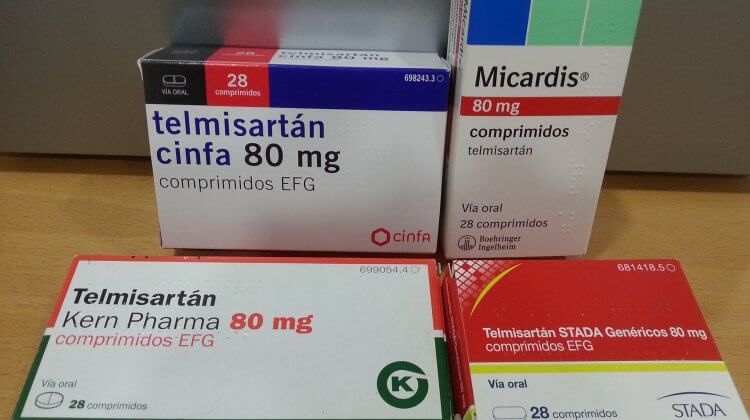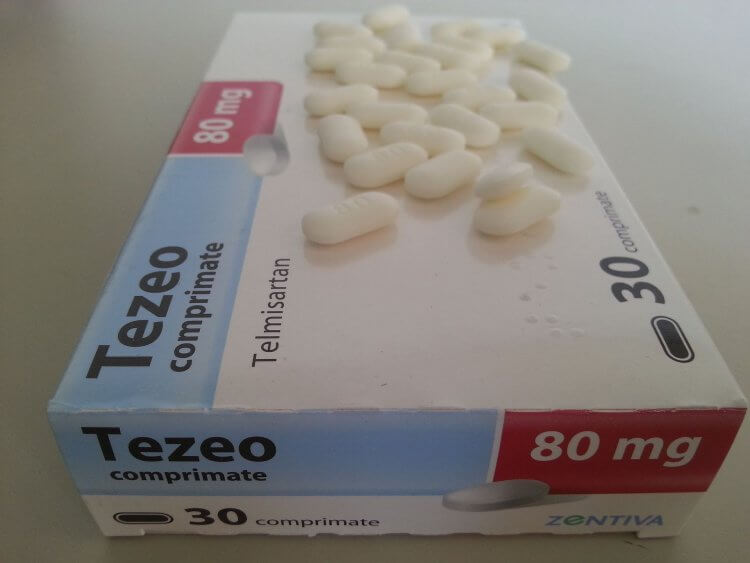
Telmisartan (Micardis) is an oral prescription medication most commonly used to treat hypertension, including mild hypertension where blood pressure is only moderately elevated or borderline. If choosing to self-medicate for mild hypertension or borderline high blood pressure, telmisartan is an excellent or even best choice.
As elevated blood pressure is often an undesired side effect of anabolic steroid cycles and can even limit use of androgens, this use of telmisartan is already enough to make the drug of value to many.
However, telmisartan also has an entirely different category of use, due to having quite a number of other interesting properties which can be valuable in some instances.
I don’t know of a term to describe this second category of use. The closest is a category I call “metabolic healing,” though that’s not a scientific term, in which I’ve been working to develop new administrations of natural product compounds. This has been an ongoing process I haven’t yet completed, but to me it’s extremely promising. What I mean by this category is, use of substances or combinations of substances to change gene expression in a way working to correct damages in gene expression associated with age, development of insulin resistance, and/or chronic poor diet. The goal is to return the expression (mRNA production) levels of these genes for receptors, cofactors, and cytokines to healthy values. This also is generally what telmisartan does, to a large extent, in a drug that’s already available and fairly easily obtained.
Benefits can include improvement to fat loss, endurance, insulin sensitivity, reduction of risk of atherosclerosis, stroke, and of heart attack, and possible benefit to brain health. In some cases mood or energy can be improved as well.
When to use telmisartan
If blood pressure needs to be moderated, I’d certainly consider using telmisartan. If there is no such need, factors that could suggest its use include interest in reducing visceral fat, of improving impaired insulin sensitivity, of reducing risk of atherosclerosis, or depending on personal interest, of possibly improving brain health and function.
Reasons not to use telmisartan could include unwillingness to accept the risk of possible side effects, or unwillingness to shift the balance of fat loss towards visceral fat loss versus subcutaneous fat loss. In general, if dieting and training achieve only the same bodyfat percentage despite the positive effects of telmisartan, appearance could be smoother due to the same amount of bodyfat being present but with less of it stored as unhealthful visceral fat. On the other hand, if taking advantage of improved loss of visceral fat with telmisartan to achieve a lower bodyfat percentage, then there’s no smoothness penalty. However, when aiming for contest condition there’s a certain amount of fat that the body must retain: theoretically, reducing visceral fat in this case might force retention of a greater amount of subcutaneous fat. So I wouldn’t advise telmisartan use in the last few weeks before a bodybuilding contest.
How to use telmisartan
To reduce risk of atherosclerosis, cardiovascular disease, or stroke where risk is only moderate in the first place, I suggest a dose from 20 to 40 mg taken orally once per day. Dosing would be the same where the interest is slowing loss of brain function with age, or potentially improving brain function.
For possible improvement in fat loss, particularly of visceral fat, or improvement of endurance I suggest dosing of 80-160 mg/day. Starting dose, however, generally should be only 40 mg/day until tolerance is assessed.
While it’s not required and telmisartan users in general do not do so, when using this drug I suggest supplementing with oleuropein 200-400 mg/day and Vitamin D 5000 IU/day. These are to reduce or perhaps eliminate two activities of telmisartan that I would not consider desirable for physique or performance enhancement, though they add to its medical use.
Telmisartan should not be used in combination with a diuretic, and I would avoid allowing severe dehydration while using this drug.
Blood pressure should be monitored while using telmisartan. Typically, any decrease of blood pressure is simply to healthful levels or more-nearly healthful levels, and those who do not have high blood pressure see no decrease with telmisartan. Still, there can be exceptions, so this should be watched.
Lastly, I would cycle telmisartan use rather than use it continuously. There’s no proof of what cycling method might be optimal, but for example I’d suggest being “off” about as many weeks per year as “on” as a minimum. This is not because of proven problem, but simply because I expect the benefits can be fully or nearly fully realized with this amount of use, and where any of the changes to gene expression or receptor blocking might be adverse in the individual case rather than beneficial, this will then be no more than half the time.

Pharmacological effects of telmisartan
Briefly, telmisartan is in the pharmacological class of angiotensin receptor blocker, but has many effects on gene expression which generally are favorable to metabolism, endurance, and body composition. Results can include increasing PPAR-delta, GLUT4, UCP1, SIRT1, AMPK, HDL, phospho-AMPK-α, hormone lipase, adiponectin, leptin, CRP, IL-1β, and fatty acid oxidation in muscle; decreasing aldosterone, TNFα, LDL, serum triglycerides, inflammation in adipose tissue, and fasting blood glucose; and inhibiting adipogenesis.
All these can be helpful activities for fat loss or for improved health; PPAR-delta activation also can result in increased muscle endurance via increasing oxidative capacity of Type II fibers.
Telmisartan also is a partial agonist of PPAR-gamma, which while useful for those with diabetes, I would not choose for a physique-enhancing drug because activating PPAR-gamma works towards enhancing fat storage. Telmisartan has so many activities working against fat storage that overall it’s unlikely to gain bodyfat from the PPAR-gamma mechanism, but still I would prefer to minimize this activation. Oleuropein supplementation can work towards blocking this activation, so it’s a suggested supplement to use in combination with telmisartan.
The other undesired activity is partial blocking of the 1,25-dihydroxyvitamin-D receptor. I would address this with supplementation of Vitamin D.
Muscle fiber type switching?
Telmisartan has a biochemical effect on muscle cells which is very similar to the effect of exercise. A consequence of this is increased oxidative capacity of Type II muscle fibers, which may be called “switching” from Type IIb to Type IIa. It’s possible that such switching could be a significant concern for powerlifters, Olympic lifters, shotputters, or other extremely explosive athletes. On the other hand, ordinary resistance training also induces the same effect, and any such effect is likely reversible in any case.
Switching between Type II and Type I fibers, which would be of more concern, does not happen with telmisartan so far as is known. (Such switching in humans appears possible only by changing the nerve to which the muscle fiber is connected.
In general, it’s not necessary to be concerned that telmisartan use will result in a bodybuilder-type physique becoming an endurance athlete-type physique. But increased ability to do high rep work is common.
Telmisartan and left ventricle hypertrophy
There’s no human evidence as yet as to whether telmisartan use may reverse or partially reverse anabolic steroid induced left ventricle hypertrophy (LVH), but in animal models telmisartan can act to reverse LVH. Time will tell whether reversal or partial reversal of anabolic steroid-induced LVH might be yet another benefit of telmisartan use.
Possible side effects of telmisartan
While telmisartan is generally well-tolerated, potential side effects include headache, dizziness, diarrhea, tiredness, and similar complaints though these are relatively uncommon. Serious side effects of rhabdomyolysis and angioedema are known but very rare. Allergic response is possible. Discontinue telmisartan use if experiencing serious side effects.
A fuller listing of potential side effects may be found here. It should be kept in mind that nearly every side effect mentioned is also reported by the placebo group, and generally with similar frequency.
Conclusion
Telmisartan can be useful for moderating blood pressure of those with elevated blood pressure, both when using anabolic steroids and when not doing so, and also can improve endurance, aid fat loss, and potentially may improve long term health.
About the author
Bill Roberts is an internationally-recognized expert on anabolic steroids and performance-enhancing drugs (PEDs). He received a bachelor degree in Microbiology and Cell Science and completed the educational and research requirements for a PhD in Medicinal Chemistry at a major American university.
Bill entered the nutritional supplement industry prior to completing his doctoral thesis but his education was invaluable so far as being able to design/improve nutritional supplement compounds, since it was in the field of designing drug molecules and secondarily some work in transdermal delivery.
His education was not specifically "geared" toward anabolic steroids other than expertise with pharmacological principles having broad applications. This has allowed Bill to provide unique insight into the field of anabolic pharmacology with knowledge of points which he would not have known otherwise.
Leave a Reply
You must be logged in to post a comment.